JACOB JONAS
of Jacob Jonas The Company
founds global platform & series
“Films.Dance”
“We are all craving this ability to be inspired
by something out of ourselves.”
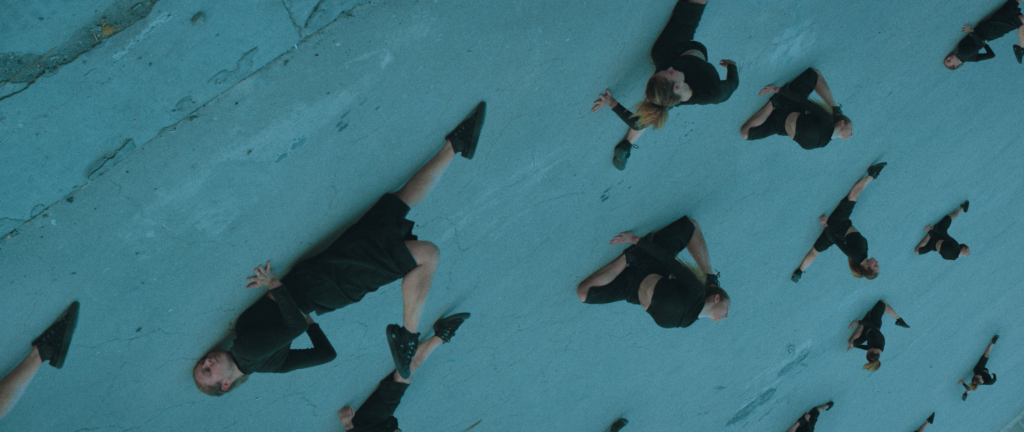
Interview by Allie King
Jacob Jonas did not let the pandemic slow him down. The young choreographer and name behind “Jacob Jonas The Company” used the past year as a drive behind tackling “one of the most ambitious international dance film projects ever.” Previously known for his work on Kanye’s Opera and Nike’s Write the Future spot, he has now brought together artists from across the globe to tell the story of authenticity in ways that are extremely innovative for the traditional dance industry. “Films.Dance” is his new series of short dance films created from unique collaborations, allowing you to leave your home for a few minutes and indulge in diverse cultural art.
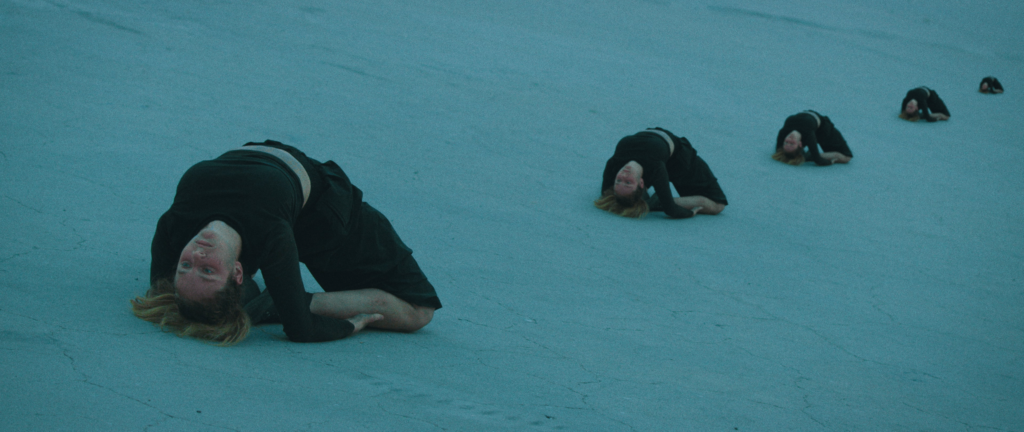
AK: Everything that you are doing during quarantine is so exciting. I feel like it has been such a weird time for entertainers, as the theatres have been closed and productions, in general, have been shut down. I was hoping you would start by telling me a little bit about your series and how the pandemic has gone for you.
JJ: Yeah, for sure. We have a dance company, and prior to the pandemic, we were touring around the world doing live shows. We have been very motivated and interested to bring together the community of dance as a medium and try to make the medium more visible. That has always been part of our mission: Community engagement and visibility for dance.
When the pandemic happened and theatres closed, dance companies stopped working. We were interested to see what could be an initiative that we could start that would make dance visible. And not just in North America, but globally. We thought about this idea of non-traditional collaborations and paired dancers with choreographers from different parts of the world, having them work together virtually. Then [we had] the mediums of music and film interpret dance in new ways to make these films. We just ambitiously came up with the number 15, rolled with it, and tried to make 15 films in a few months.
Most traditional dance companies that have been around for many years have really engaged older audiences. This idea of generational marketing has been around with dance. Typical audiences you see at dance shows are much older. Being young and understanding today’s culture, we were just like: “How do we activate it in new and interesting ways to make it vibrant on social media and also exciting for people our age?”
AK: From everything I have seen, it has been awesome. As someone who does not know a lot about dance, everything you have created has been so captivating and drawn me in as a complete outsider of the industry. So, when you originally have the idea to tackle this project, where do you begin creatively?
JJ: That’s a good question. We were lucky to have this cultural ecosystem of dancers and choreographers that we always admired and that we collaborated with as we have traveled around the world. In music and film, I have personally been in touch with a lot of filmmakers and composers that I have wanted to work with. But you just keep putting things off as everyone does in their life because everyone is stressed and busy. When the pandemic hit, I was just reaching out and gauging people’s interests.
Where does it start? Tapping into those people, expressing the idea, and seeing what the feedback is. Then just going for it. Luckily, because we are in LA and we have done a lot of projects with agencies, brands, and musicians, we know how to produce. We had a background in the business and production side of things. Then it was just trying to make them start happening.
AK: As you said, it is a big collaborative process. Everything that you are creating is more than just dance. It comes to fashion, videography, scoring, and so on. When you start brainstorming these dances, do you have the visual in your head of how you want it to end up, or is do pieces fall together as you go?
JJ: It’s different for each project. It was really seeing naturally what would happen with the choreography to start, allowing that choreography to be almost like a script but a script of movement. Then letting that develop itself. One of the films, “Toke,” was really inspired by Toke’s story of being a disabled artist. We took more of a docu-style approach.
I think it was really just more about trust, doing a lot of rigorous research on the artists who were going to be a part of it, and once they were on board, trusting their instincts throughout the process. I think so often, in journalism and the arts, people talk about the result. But the process in this project was really a big part of it. Trusting people and making sure that they felt that their work and their ideas were important.
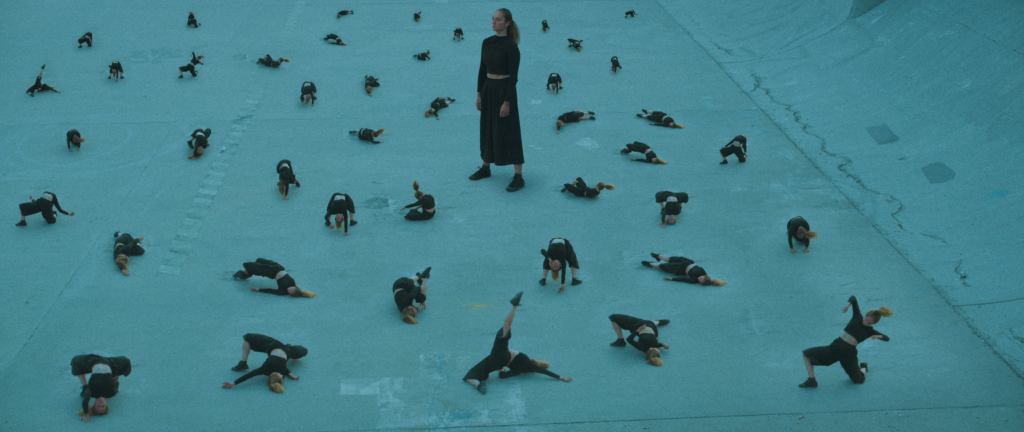
AK: Right. Building off that, what do you learn in this process? The industry you are working in currently is different than the one you were working in a year ago, because everything has changed so much.
JJ: The importance of digitizing art and popularizing it. Specifically dance. When you want to go hear a musician, see a show, see a film, you know who the actors are. I think a lot of it has to do with the marketing, press, and administration in those mediums. It’s very efficient and fast flowing. In our field, there is a lot of exciting work to be done with redefining leadership in new ways. That is one of them.
Other things I have learned is how motivated people are to make work. We are all kind of waiting on the homework assignment if that makes sense. I think we are all waiting for someone to tell us what to do. It showed what a great responsibility it was to come up with ideas, because artists are ready to be supported, valued, and asked to make projects. It shows the potential for how much work can be made that is not being made right now.
AK: And I feel like a lot of the work that came out during this time the most honest work because we are all just sitting at home with our feelings.
JJ: I think prior to the pandemic, especially on social media, everyone was so worried about their visual brand and portfolio. Something that has been transparent is how important it is to communicate vulnerability during this time.
AK: I completely agree. Building off what you said earlier about integrating modern dance into the current industry and reaching out to younger audiences; if you were to speak directly to this new audience, why do you think they should be paying attention?
JJ: I think that’s a great question. It’s just the exposure to humanity and emotion. In its simplest form, the reason we watch films is because there is a relatability to what the experiences are in those characters and narratives that we want to relate to our own lives. There is a certain sense of relatability, but also inspiration. We all are craving this ability to be inspired by something out of ourselves. So we work really hard to find that inspiration via people and companionship. I think art plays such an important role.
Also, people are really inspired by sports because of athleticism. Dance plays this really interesting intersection between athleticism and creativity that you are able to tell stories but also admire the human body. It is a two for one.
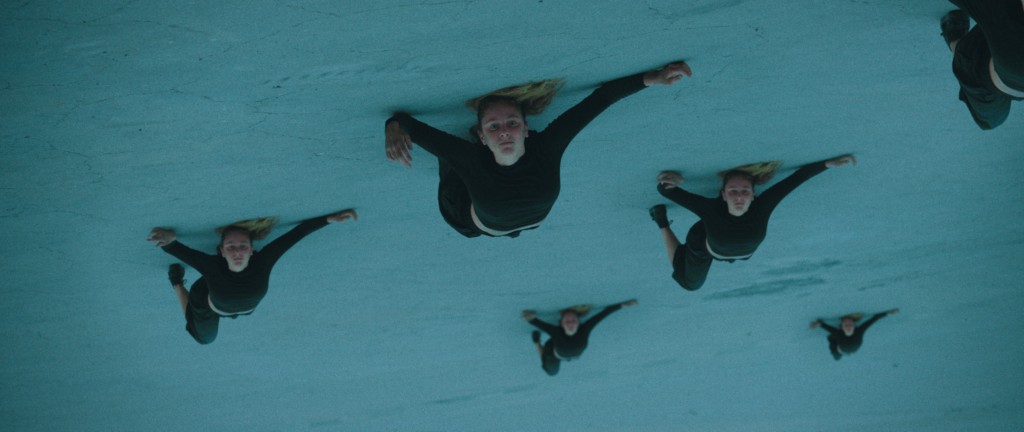
AK: It is beautiful. Was the pandemic a particularly creative time or was it challenging to get yourself thinking creatively during this time?
JJ: Where I am at in my career right now, it was very exciting. There are choreographers that I have talked to who are in their 60s and 70s and are super established that don’t really have a lot to prove or say. I was super excited and motivated this whole time because I knew no one else was really working. We should try to redefine new ways for when we get out of this. I think it inspired me creatively a lot.
AK: Taking yourself out of the pandemic, as a young successful artist that is now taking on what people are calling “one of the most ambitious international dance film projects,” what drives you? What is inspiring you to think this way and to create your art?
JJ: A big drive is my energy to make good work and to amplify the voices of artists that I have so much admiration for. I know how much they inspire me and I know it will inspire a lot of other people.
Separately … I am kind of sick of the narrative that dance isn’t a worthwhile thing. When any artist tells their parents they are going to be an artist, there is so much judgment from their family and friends. I think we pay such an important responsibility to try to have a new framework for how society views being an artist. From a business standpoint, there are a lot of new structures that need to be put in place. A big part of my drive is wondering how we shift that so that it becomes more sustainable financially, but also more exciting for younger people to do it. Because the arts are so important.
AK: Right. I wanted to mention one of the films that I was able to watch on your Instagram called “ANOTHER DANCE FILM.” I would love to get the story behind it because I was really drawn in. At what point in this process does the idea for this film come about? Who is behind it?
JJ: I had reached out to Sarah Mearns, with who I had been lucky to build trust and a relationship. She is a principal dancer in the New York City Ballet. She is a very sought-after artist. I was just reaching out to her and she was in an artistic rut. I was telling her about the project and she was really excited to do it. We paired her with Andrea Miller, who choreographed it, and was lucky that Henry [Joost] and Ariel [Schulman] were great directors and came on board too.
I think a lot of it started with the desire for her to feel seen. This idea that she misses having an audience and people watching her. That is where the idea started. From there Henry, Ariel, and Andrea worked collaboratively to find that narrative. It is a big risk to do a narrative like that because if it goes wrong it goes terribly wrong. For me, what was exciting was pairing those three artists together; and Antonio Sánchez at the end to compose it. I think it paid off really well.
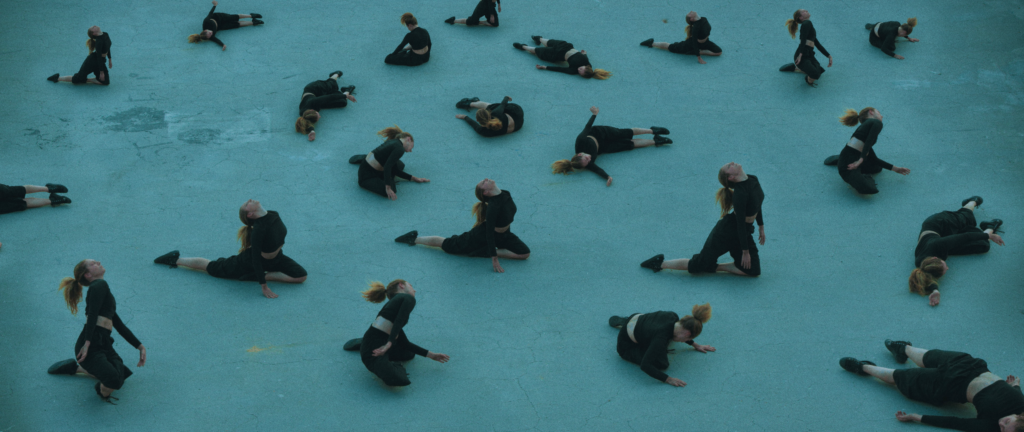
AK: Right, and I think the whole narrative behind that entire film a lot of people can relate to. If you had to pick one film that you are most excited to share, which would it be?
JJ: I think one of the films that was most exciting in terms of the process was “Plume.” It was super exciting for me because circus seems to be not as exposed as other dance forms. Musically something that was really exciting about that project was Gaelynn Lea — a disabled singer-songwriter from Duluth, Minnesota. She won the Tiny Desk Competition through NPR. She did this improvisation during the pandemic that I was super inspired by and wanted to use it for one of the films. Also, Hilary Hahn, who is a Grammy award-winning musician. The intersection between those two worlds was just really incredible and a non-traditional collaboration.
As a film, I really resonate with the “Sit Still” film that came out recently of the little girl in the school. I think so many of us resonate with the feelings of being in school, being bullied, and feeling like people don’t understand us. It’s really powerful to see the little girl from before society has come in to influence her through social media. That pure and natural interest to be a dancer is really powerful. So hopefully it sustains throughout her life. I think it is really powerful to see someone so captivated by being a movement artist.
AK: I agree. I loved that one. When I was watching your films, I was really taken by the variety of people involved. It was very inclusive. Her story was amazing and again, something that we can all relate to.
Looking forward, how do you think that the industry has changed from innovative projects like yours? How do you think they will move forward once theatres reopen and companies are able to tour again? What do you want to keep, and what are you looking forward to going back to normal?
JJ: Many dance companies have been so focused on performing for the stage. I don’t think a lot of our organizations understood the importance of digital marketing and being exposed online. Because of that, I think we all got exposed to different work around the world. It brought a lot of people together. From a psychological standpoint, I think it made us a lot more supportive of each other as opposed to competitive.
Digitizing feels necessary at this time. If you think about Justin Bieber, Billie Eilish, Adele, or Kanye: He was super young when he got Grammys. When other mediums come up, they get a lot of recognition when they were younger. In dance, it takes much more time — until their 40s or 50s — until they start receiving recognition. A lot of that is because the people who are giving those opportunities don’t want to take the risk financially. What this pandemic has done is given a lot of younger voices the ability to be heard and build audiences. So hopefully there is a new coalition of youthful energy that will give a vibration to the rest of our medium to sustain itself long term.
AK: Definitely. I think the world has moved way further into the digital age than we had previously. It’s exciting, especially for the younger generation. I think they will benefit a lot from it. What was the biggest challenge for you in this project?
JJ: The biggest challenge sustains to be the biggest challenge, which is just having too much ambition. [Laughs] Trying to get other people around me to meet those ambitions, and to move forward with excitement rather than with fear.
Oftentimes people proceed with fear or communicate their challenges as oppose to their excitement, optimism, or ambition to get something done. For the first time, just understanding patience in a big way. When you are building something so big with so many different people, it’s like you are building an album but each song is with a different artist. You just have to be patient until you can release the whole album, as oppose to releasing individual songs.
Naturally not being able to connect human to human has been artificial but necessary. If we weren’t able to connect virtually like this none of these projects would have been made. That’s good, but it’s been a challenge. A lot of these people you just want to give a hug. That’s been hard.
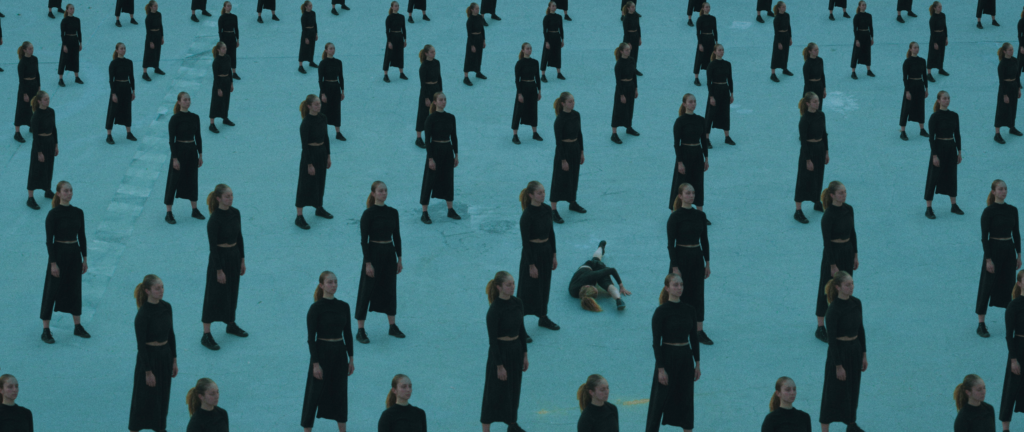
AK: For sure. In your head, when you look at the 15 films — each different, created by different people, with different collaborators — is there an intertwining storyline or theme in your head?
JJ: Yeah. A lot of the themes that we talked about with the artists was the idea of celebrating authenticity. Authenticity has been super important: The idea of diversity, cultural diversity, diversity of thought, diversity of background, in age, race, culture, and sexuality.
When thinking about the locations, [we considered] certain social narratives of climate change and the environment. We wanted the backgrounds to be as exposed as possible so that audiences that are in Asia can be watching a film in Barcelona and feel like they are there. Also, just seeing the natural landscapes of these places.
AK: That is something that I never would have even thought about. But it is such a big part of this, being able to experience art from different cultures. I think you did a great job with that as well.
So what is next for you? I know that you have more films coming out, but fill us in.
JJ: So the “Films.Dance” platform is something that we are going to continue to sustain. We are actually working on 30 more films right now, which is quite ambitious. A lot of them are in the pipeline now, being shot, or in pre-production as we speak. The goal is that we just continue to release films.
We are [also] planning to re-strategize and rethink live performances moving forward. How can we choreograph and activate spaces in person? That’s kind of taking up a lot of my time.
AK: Correct me if I am wrong, but during the COVID-19 pandemic you did a live show as a drive-in correct?
JJ: Yeah. We were the first dance company — definitely in the country, but I think in the world — to do a full-length evening produced show. I choreographed work in two weeks in a parking lot. We presented it in early May to everyone as they sat in their cars. It was a full evening work, 45-minute work, that we made in two weeks.
AK: I live in Kentucky so there has been nothing happening around me. Not many live events or drive-ins. I am just waiting for touring to start back. [Laughs]
JJ: Oh yeah!
AK: It was so nice to meet you. I think everything you are doing is so incredible.
JJ: Take care, Allie. Thank you!
Creative Director
Deborah Ferguson
Interview and Transcription
Allie King
Photos
Provided by Jacob Jonas The Company
Web Layout
Victoria Smith
